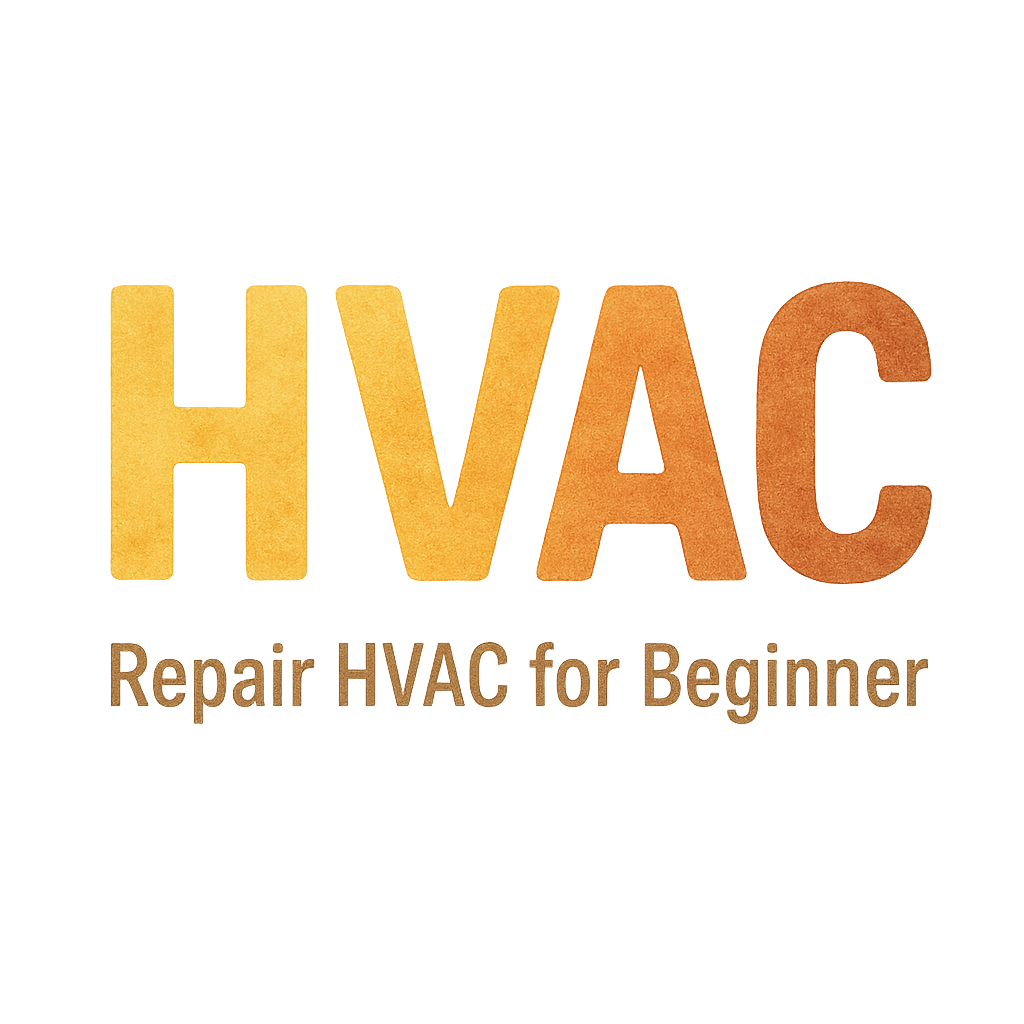Introduction: Why DIY HVAC Repairs Matter
DIY HVAC repairs can seem daunting, but with the right tools and knowledge, homeowners can save money and ensure their system runs efficiently. Whether you’re dealing with a malfunctioning air conditioner, a faulty furnace, or just trying to maintain your HVAC system, having the right tools is essential. With DIY HVAC repairs, not only can you troubleshoot issues more effectively, but you can also prolong the life of your system. In this article, we’ll walk you through 10 must-have HVAC tools that will make your DIY repairs smoother and safer. Let’s get started!

1. Digital Multimeter: The Essential Diagnostic Tool
What is a Digital Multimeter?
A digital multimeter (DMM) is a versatile tool that allows you to measure voltage, current, resistance, and more. It is an essential diagnostic tool for anyone working with electrical components in HVAC systems.
Why It’s Crucial for HVAC Repairs
In HVAC systems, most components are electrically powered, from thermostats to motors and wiring. Using a digital multimeter will help you identify issues such as faulty circuits, improper voltage, or short circuits. It’s a game-changer for diagnosing electrical problems.
How to Use It Effectively
To use a digital multimeter, first ensure it’s set to measure the correct type of electrical activity (voltage, resistance, etc.). For example, if you’re checking the voltage on a thermostat, ensure the multimeter is set to measure DC voltage. The tool’s probes should be connected to the component you’re testing.
For more detailed information on troubleshooting HVAC issues, check out our guide on HVAC System Diagnosis.
2. Refrigerant Gauge Set: Precision for Cooling Systems
What is a Refrigerant Gauge Set?
A refrigerant gauge set is a tool used to measure the pressure of refrigerants in your HVAC system, allowing you to gauge whether the refrigerant level is correct. This tool is essential for HVAC repairs involving cooling systems.
Importance in HVAC Repairs
The refrigerant pressure directly impacts the performance of your cooling system. If the pressure is too low or high, it can lead to poor cooling or even system damage. A refrigerant gauge set lets you monitor these pressures and make necessary adjustments.
How to Use a Refrigerant Gauge Set
When using the refrigerant gauge set, attach the hoses to the service ports on the HVAC unit, then check the readings on the high and low-pressure gauges. If the pressure readings are outside the normal range, it may be time to recharge the refrigerant or check for leaks.
For more tips on maintenance, check out our HVAC Maintenance and Cleaning guide.
3. Manifold Gauge Set: An Essential for Monitoring Pressure
What is a Manifold Gauge Set?
A manifold gauge set is another tool for measuring and regulating refrigerant pressures. It provides a more comprehensive view of the pressures in your system, which is vital for repairs.
Why It’s Necessary for DIY HVAC Work
If you’re working on an air conditioning or refrigeration system, a manifold gauge set is invaluable. It allows you to monitor both the high and low sides of the refrigerant system to ensure everything is working correctly.
Proper Usage and Maintenance
When using a manifold gauge set, attach it to the HVAC system’s refrigerant lines, then check the pressure readings. Make sure the system is turned off before connecting, and always check for leaks after you finish your repairs.
For more detailed troubleshooting tips, check out our Troubleshooting and Repair page.
4. Tube Bender: Precision for Copper Tubing
Why Tube Benders Are Essential
When working with HVAC systems, you’ll often need to bend copper tubing for refrigerant lines. A tube bender ensures that these bends are smooth and precise, preventing kinks that could impede refrigerant flow.
How to Bend Copper Tubing Like a Pro
To use a tube bender, place the copper tube into the bender and gently pull the handle to form the desired bend. Avoid over-bending, as this can damage the tubing. Precision is key, so take your time.
If you’re working with copper tubing and need more tips, you might find our HVAC Tools and Equipment guide helpful.
5. Pipe Wrench: Secure and Tighten Fittings
What Makes a Pipe Wrench So Useful?
A pipe wrench is designed to grip and turn pipes and fittings, making it perfect for securing or loosening pipes in HVAC systems. Whether it’s ductwork or water lines, a pipe wrench is an essential tool.
Using a Pipe Wrench Safely and Effectively
When using a pipe wrench, adjust it to fit the size of the pipe, and then use it to either tighten or loosen the fitting. Be sure to apply pressure gradually to avoid damaging the pipe or fitting.
To learn more about safe practices when repairing your HVAC system, visit our Repair Safely page.
6. Nitrogen Regulator: Ensuring a Clean HVAC System
What is a Nitrogen Regulator?
A nitrogen regulator controls the flow of nitrogen gas, which is essential for purging HVAC systems during maintenance or repairs. Nitrogen is used to remove moisture from refrigerant lines, preventing contamination.
Benefits for HVAC Systems
Nitrogen helps ensure that refrigerant lines are free from moisture and contaminants, which can damage components such as compressors and coils. It’s crucial for proper HVAC maintenance.
How to Use It Correctly
To use a nitrogen regulator, attach it to the nitrogen tank and your HVAC system. Open the valve slowly to ensure the system is pressurized correctly, and monitor the pressure gauges during the process.
For more on this tool’s importance, see our HVAC Maintenance Tips.
7. Cordless Drill: A Versatile Power Tool
Why You Need a Cordless Drill
A cordless drill is one of the most versatile tools in your HVAC toolkit. From drilling holes in ductwork to driving screws for component installation, it’s indispensable for a variety of HVAC tasks.
Choosing the Right Drill for HVAC Jobs
Look for a drill with variable speed settings, high torque, and a long-lasting battery. A drill with interchangeable bits will allow you to tackle multiple tasks without changing tools.
Safety Considerations When Using a Drill
Always ensure the drill bit is suited to the material you’re working with and double-check that the battery is fully charged before use.
For more on the importance of drills in HVAC work, check out our Troubleshooting Tips.
8. Vacuum Pump: Keep Your HVAC System Leak-Free
What Does a Vacuum Pump Do for HVAC Systems?
A vacuum pump is used to remove air and moisture from HVAC systems. This is especially important when installing or servicing air conditioning units, as moisture can cause refrigerant to degrade.
When and Why to Use a Vacuum Pump
Before introducing refrigerant into the system, you should use a vacuum pump to purge the system of air and moisture. This ensures that your refrigerant is clean and free from contaminants.
How to Operate a Vacuum Pump
Attach the pump to the system and run it until the required vacuum level is achieved. Monitor the gauges and ensure there are no leaks.
For more tips on operating HVAC tools, see our HVAC Tools and Equipment page.
9. Flaring Tool: Essential for Proper Connections
What is a Flaring Tool?
A flaring tool is used to create a flare at the end of a copper tube. This flare helps to create secure connections in HVAC systems.
How to Use a Flaring Tool for HVAC Jobs
Place the copper tube in the flaring tool and turn the handle to create a flare. This ensures a tight, leak-free connection when joining refrigerant lines.
10. HVAC Clamps and Pliers: For Precision and Efficiency
Why Clamps and Pliers Are Critical
HVAC clamps and pliers are essential for holding components in place while you work, especially when dealing with ductwork, refrigerant lines, and fittings.
How to Choose the Best HVAC Pliers and Clamps
Look for pliers and clamps that are ergonomic and designed specifically for HVAC work. A good set of clamps will help you secure components while you make adjustments or repairs.
For more information on the best HVAC tools, visit our HVAC Tools and Equipment page.
Conclusion: How These Tools Empower DIY HVAC Repairs
Having the right tools is key to any successful HVAC repair, whether you’re troubleshooting electrical issues or performing routine maintenance. By investing in these 10 must-have HVAC tools, you’ll be ready to take on any task that comes your way.
Remember, regular maintenance and proper usage of these tools can extend the life of your HVAC system and keep your home comfortable year-round.
FAQs
- Can I use a standard multimeter for HVAC repairs?
Yes, as long as it has the necessary range for HVAC work. For more detailed guidance, check our HVAC System Diagnosis page. - What size refrigerant gauge set do I need?
Most DIY jobs require a standard set, but ensure it’s compatible with your refrigerant type. Find more information in our HVAC Tools and Equipment guide. - How do I know if I need a nitrogen regulator for my system?
A nitrogen regulator is essential if you need to purge or pressurize your system. Learn more on our HVAC Maintenance Tips. - Is a cordless drill necessary for HVAC repairs?
Yes! It’s a must-have tool for drilling holes and driving screws during HVAC installation and repairs. - Do I need to evacuate the system before adding refrigerant?
Absolutely. Always use a vacuum pump to remove air and moisture. See our HVAC Maintenance and Cleaning page for more info. - Can I bend copper tubing without a tube bender?
You can, but a tube bender will give you precise, smooth bends without damaging the tubing. - What are the most common mistakes DIY HVAC repairers make?
Common mistakes include using the wrong tools, neglecting safety precautions, or failing to perform routine maintenance.


